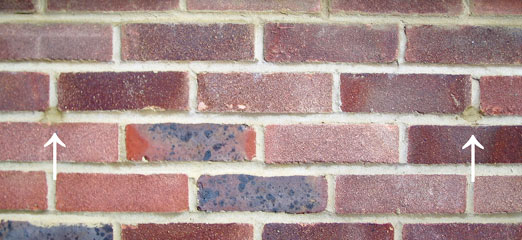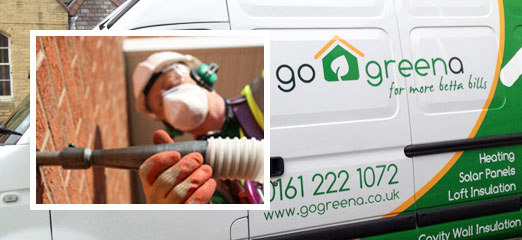Cavity wall insulation (or CWI) can cut down the amount of heat lost from your home, lower your heating bills and reduce your carbon footprint. It is also quick and fairly easy to install. So how does it work? Is your home suitable? Who qualifies to have it installed for free? Read on to find out…
How Does Cavity Wall Insulation Work?
Air acts as a natural insulator — in other words, heat does not travel through air very easily. Most people know that the best way to keep your body warm is to wear several layers of clothing. This is because the layers trap air in between them and keep it still. Cavity wall insulation works in a very similar way. The wool-like material used to insulate your home traps air in between its fibres to create an ‘air matrix’. This is why cavity wall insulation is much more effective at retaining heat than empty cavity walls.
How Do I Know If I Have Cavity Walls?
Before you decide to have your cavity walls insulated, you need to know whether or not your property has them. One clue is the age of your house. People generally started to build houses with empty cavity walls in the 1920s (although some houses were built with them as early as the 1900’s). This was standard practice up until the mid-1980s, when building regulations stated that all new houses had to be built with insulation material inside the walls. So if your house was built between 1920 and 1980 there is a good chance that you have empty cavity walls.
If you’re not sure about the age of your house, another simple way to tell is by looking at the brick pattern of you outside walls. In a typical cavity wall, all of the bricks will look the same, with the long side of the brick visible on the outside. With solid walls the bricks will be in an alternating long-short pattern.
Cavity wall construction details. Cavity walls have an even brick pattern, solid walls have an alternating pattern.
What if your walls are rendered or the brickwork isn’t visible for some other reason? In that case, take a look at the thickness of your exterior walls. You can do this easily by looking at a doorway or a window. If it is more than 260mm thick, chances are you have cavity walls.
Finally, how do you know if a previous owner hasn’t already had the cavity walls filled? You can actually tell by taking a close look at your external walls. If cavity wall insulation has already been installed, you will notice a few small drill holes in the mortar between the bricks – they will have been filled and won’t be very obvious, but look closely and you will see them. This is where the installers will have blown the insulation into the walls.
If your cavity walls have already been insulated, you will notice a few small holes in your external walls which will have been filled.
Still not sure? A trained Go Greena surveyor can inspect your walls for free and let you know if they are suitable. You can book your survey here.
If it turns out you have solid walls, or for some other reason your house is not suitable for CWI, then you may want to consider solid wall insulation instead.
Grants for Cavity Wall Insulation
Paying for your own cavity wall insulation can potentially cost several hundred pounds. The good news is that at the time of writing this article, you can have it done for free — your energy provider will cover all of the cost. There is no catch and everyone qualifies for a grant thanks to the governments CERT initiative, which you can read about here.
According to the Energy Saving Trust, a typical 3 bedroom semi-detached house with no insulation will save around £135 a year in heating bills. Government policies change, so act quickly by booking a free appointment with an energy surveyor.
More Information
A quick note from the Go Greena team
You could be eligible for a FREE energy efficient boiler — which could save you up to £300 a year! See our free boilers page to find out more.





2 Replies to “Cavity Wall Insulation: Everything You Need To Know”
Comments are closed.